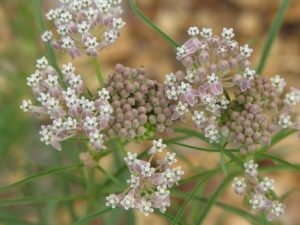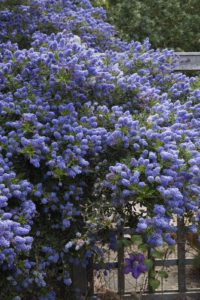
Biodiversity – this is my mission and yours if you chose to accept it. Walk into any “Garden Center” from your local one to the big box stores and what do you see? The same old thing- do I dare list them? No. We have sucked our landscapes dry of the beautiful biodiverse forms of plants we have in this BEAUTIFUL state and chosen Lavender….and lots of Agapanthus. Developments have covered our wildlands with houses. I believe (and we at The Habitat Corridor Project too) that restoration gardens in the urban environment are a BIG step to healing California.
I have spent my career with a focus (perhaps some would say obsession) on California native plants. I just think they are the most wonderful plants to hike with, to draw, to use in the garden and to study. I remember the first time I really noticed them. I was traveling in the Trinity area of California – near Redding heading from Mt. Lassen to the coast on this dusty “road” that I saw on the map and thought it looked better than being on another Freeway in 100 degree weather. We are driving along slowly and I tell my husband to STOP! We backed up a few hundred feet and got out to see the most fabulous thing I’d seen in nature so far – a seep with an amazing outcropping of Darlingtonia californica – Cobra Lilly. They are California native carnivorous plants with the most amazing flower. I was hooked! I was in my last semester of my landscape architecture program at the time and have used California native plants primarily ever since. Not so much Darlintonia in the designed landscape but many many more!
The sense of place these plants create in a garden is what I still get excited about every time a design a garden. I grew up in California and this is what California looks like, smells like etc…. I spent hours studying these plants following my favorite botanists, going to California Native Plant Society Lectures, walking in nurseries, working with the few Landscape Architects and Designers that used the plants, everything I could to learn about these fascinating subjects. Now I am an expert and feel comfortable with each and every plant I use in the gardens….no that is a lie- I actually am still learning every day and enjoy using about 10% plants in every garden I design that might be a risk. How will you learn without trying them out? and there are over 5,000 species to try!
And back to obsession… yes, my heart and soul is in the plants but it’s so fun to see the humming birds feeding on the plants in our nursery waiting for installation. Watching fluttering butterflies of an amazing range passing my desk window as I write and the bees and birds are pretty marvelous too!
One of my favorite quotes from my mentor Judith Larner Lowry, “The reasons to garden with locally occurring native plants have more to do with joining in, with setting in motion interrupted processes that are unique to this place.”
California is a beautiful place to call home.
Thank you for reading.
April



